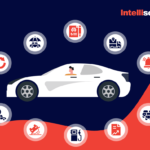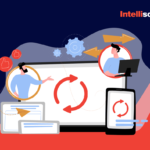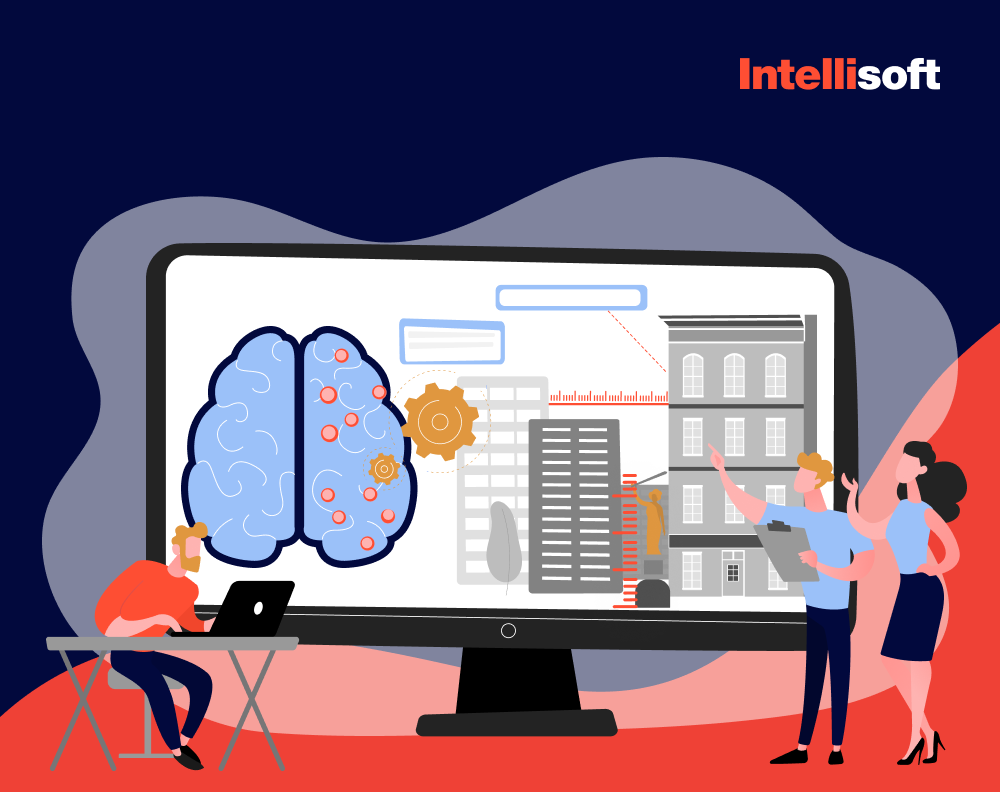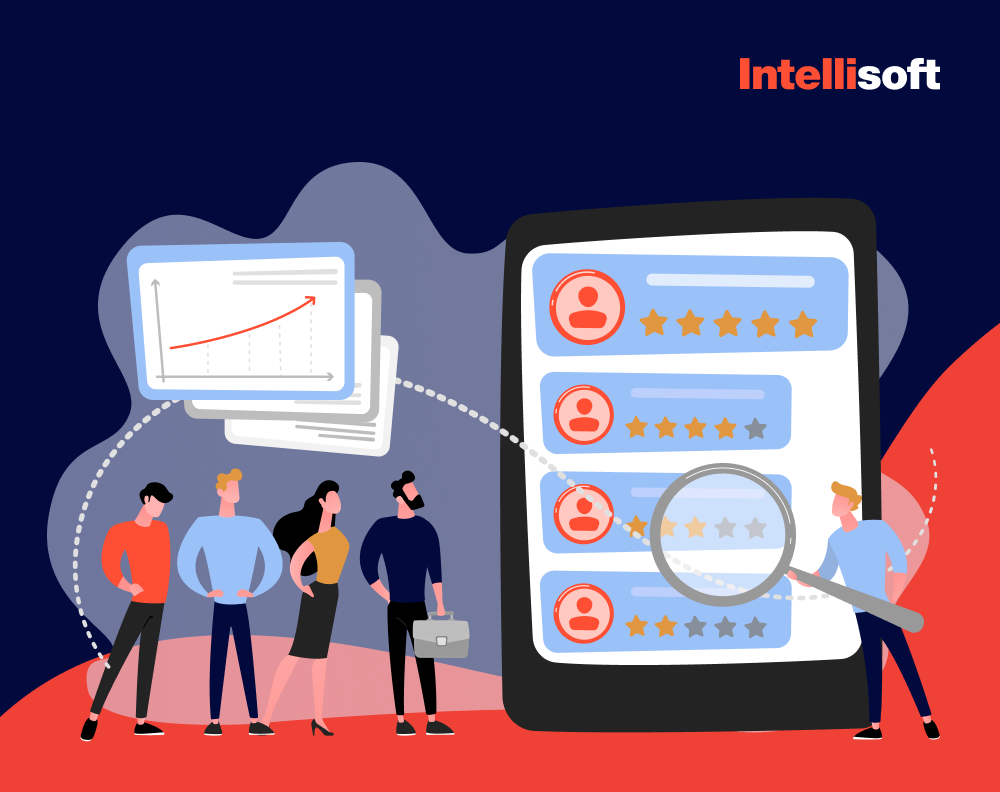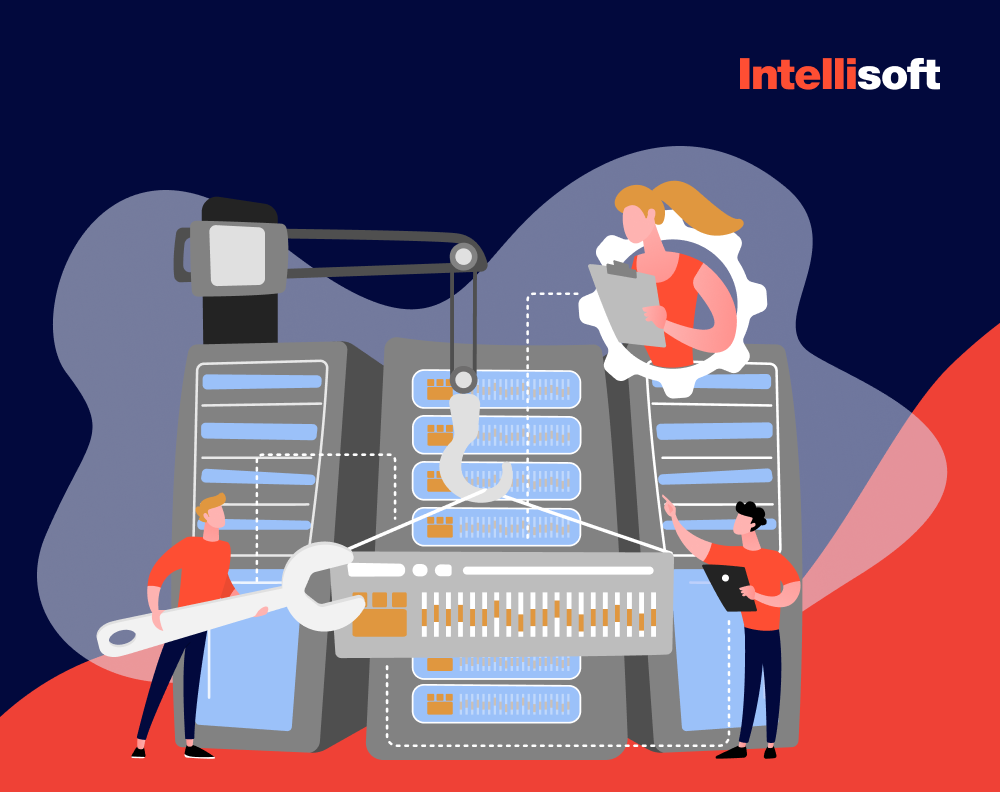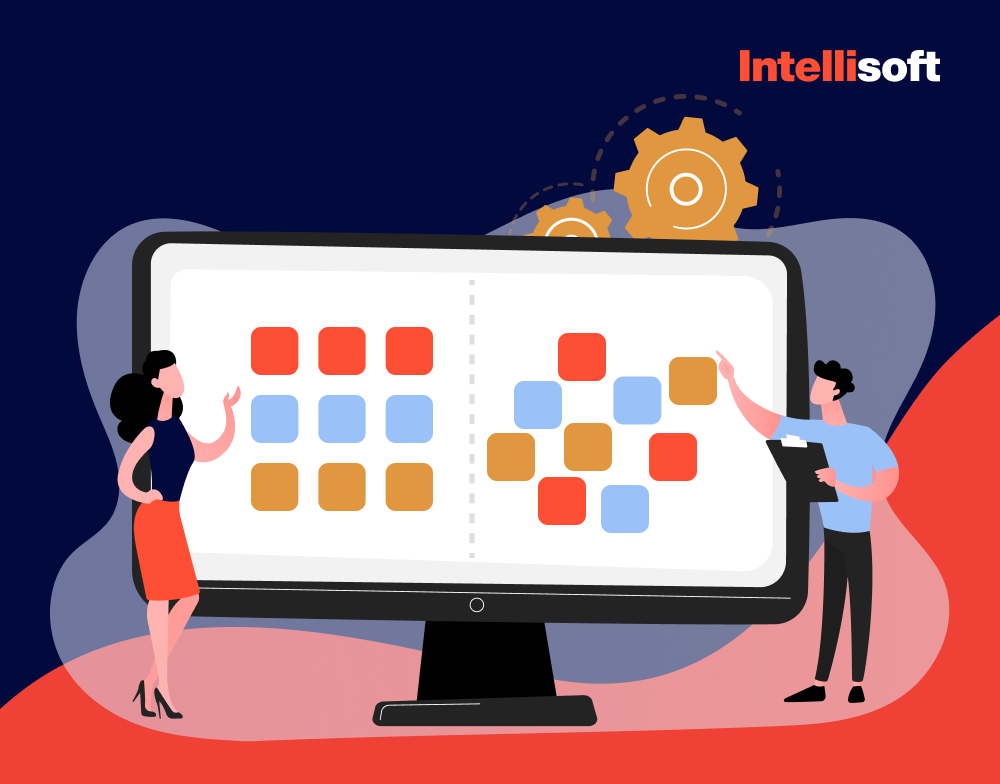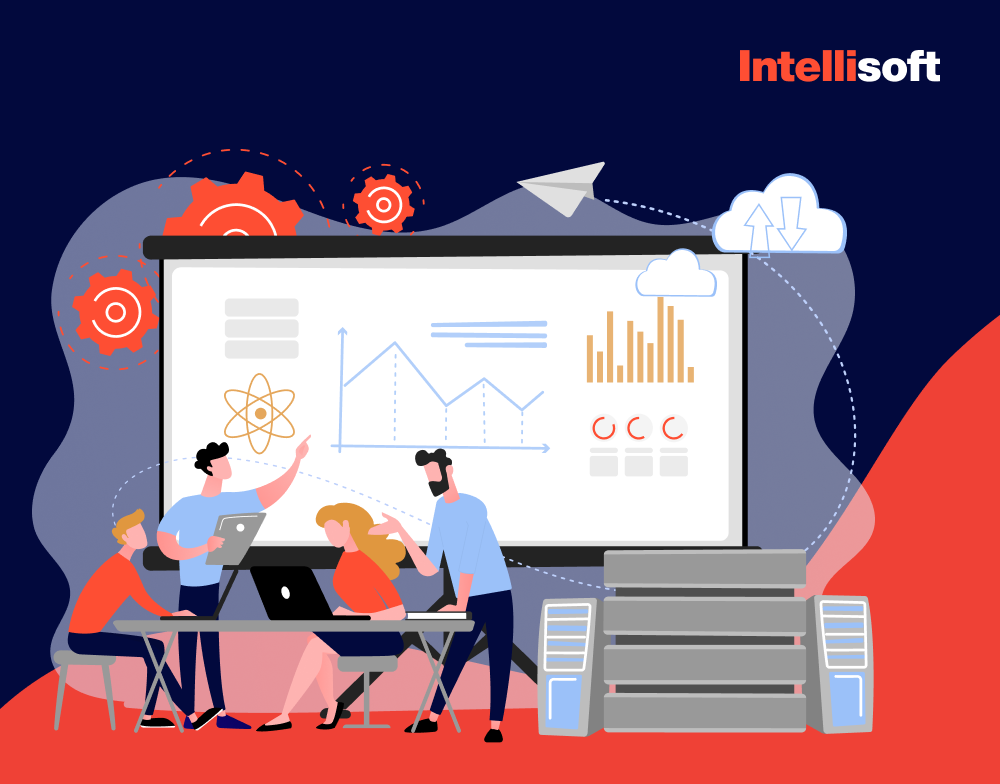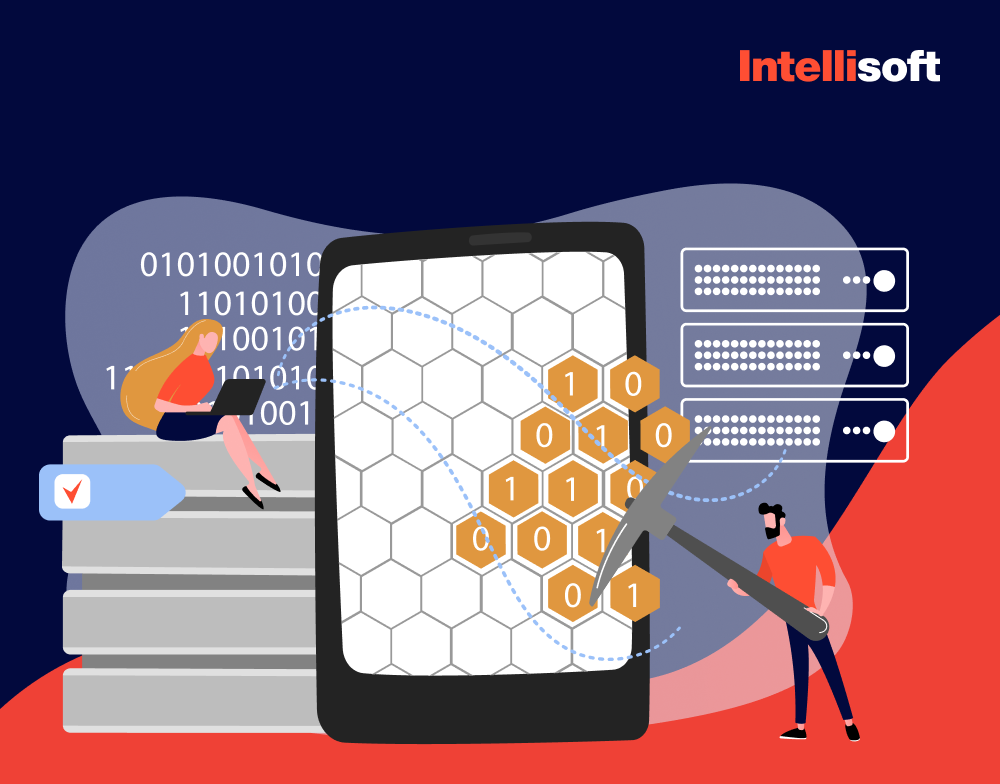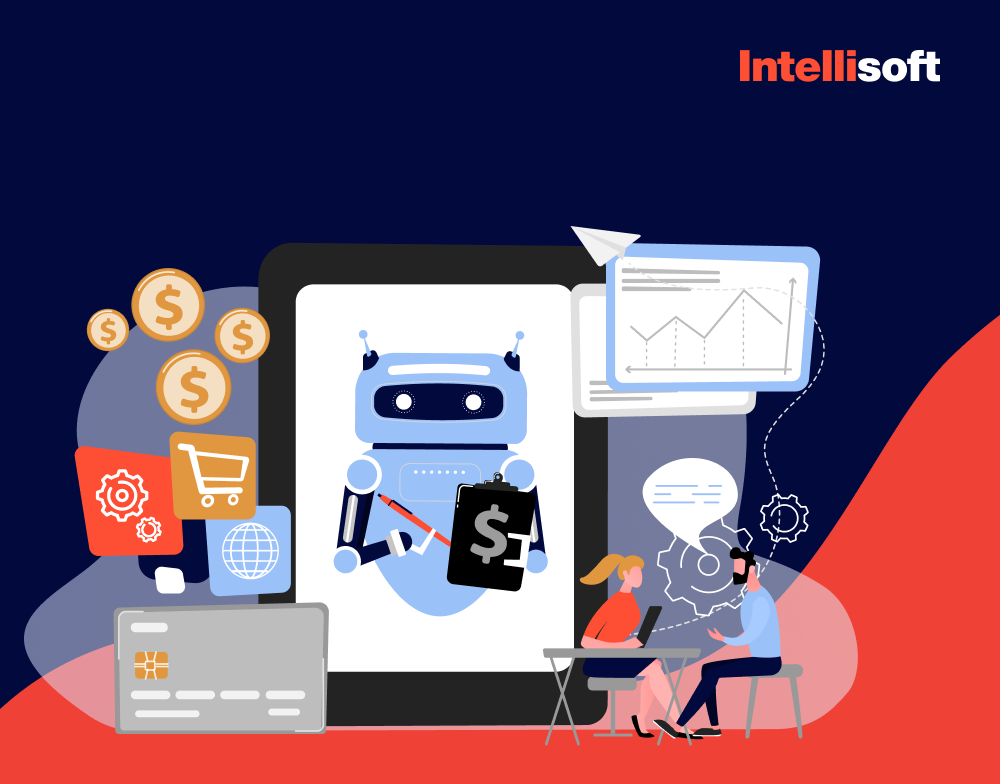Have you ever been struck with curiosity about the gears turning behind the scenes of Artificial Intelligence (AI) and machine learning (ML)? If so, you’ve come to the right place. We’re about to embark on an exhilarating exploration, dissecting the top 10 programming languages for AI and ML that will be as thrilling and smooth as a ride in a brand-new Tesla on autopilot. Forbes reports that the AI market size is expected to reach $407 billion by 2027. Feel that? It’s the rush of adrenaline pumping through the tech sphere.
We are IntelliSoft, your trusted guide for this expedition, the masters of AI and ML solutions. Our hard-earned expertise and extensive experience in the field has put us in the driver’s seat, ready to speed through the AI and ML landscape. We’re ready to reveal the mystic chants of programming languages behind these futuristic technologies.
So get ready. We’re not just going to talk about the magic behind AI and machine learning – we’re going to show you how to conjure it up.
Table of Contents
What Is AI and Machine Learning?
Artificial intelligence, or as we like to call it, the “Inception of Machine Brainpower,” is the overarching concept of machines mimicking human intelligence. AI involves machines performing tasks such as learning, reasoning, problem-solving, perception, and language understanding. Kind of like an ambitious teenager eager to conquer the world, AI is designed to have an insatiable appetite for knowledge and a knack for adapting to new scenarios.
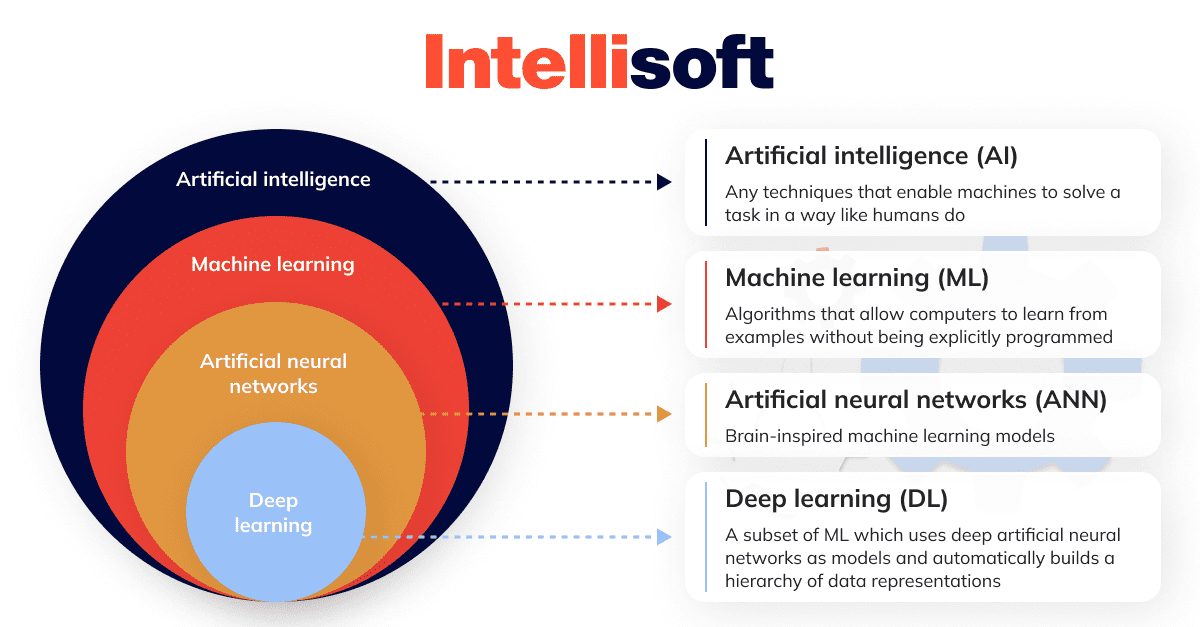
Now, what about machine learning? If AI is the queen bee, then ML is the hard-working drone that makes the hive thrive. Machine learning is a specific subcategory of AI that involves letting machines learn from data. ML allows computers to learn and make decisions without being explicitly programmed. It’s like training your pet to fetch the paper, except the pet is your computer, and the paper is valuable insights from heaps of data.
Now that we’ve covered the basics, let’s go back in time and unveil the history of these groundbreaking technologies.
The History of AI and ML
The concept of AI, believe it or not, dates back to ancient times. Greek myths told of Hephaestus, the god of blacksmiths, crafting automata for his workshop. However, it wasn’t until 1956, at the Dartmouth Conference, that AI got its official title and became a new field of research.
ML, on the other hand, popped up on the radar a bit later. It emerged from the quest for artificial intelligence, with the pioneer Arthur Samuel of IBM coining the term “machine learning” in 1959. He developed a game of checkers that learned from its mistakes and could beat the inventor himself. Talk about a Franken-checkers moment!
Fast forward to the 21st century, both AI and ML have become the backbone of the digital world, proving their worth across various fields. From aiding healthcare professionals in diagnosing diseases to enabling your smartphone to recognize your face, these technologies have redefined the boundaries of what machines can do.
The Importance of Artificial Intelligence and Machine Learning
Why are they so important? Imagine a world where you have to explain every tiny bit of a task to a machine or write gazillions of lines of code to predict the stock market. Sounds exhausting, right? That’s where AI and ML come into play. They take the yawn-inducing, repetitive tasks off our plates, make predictions with frightening accuracy, and even outdo humans at many complex tasks. AI and ML not only improve productivity but also have the potential to spawn entirely new industries and innovations.
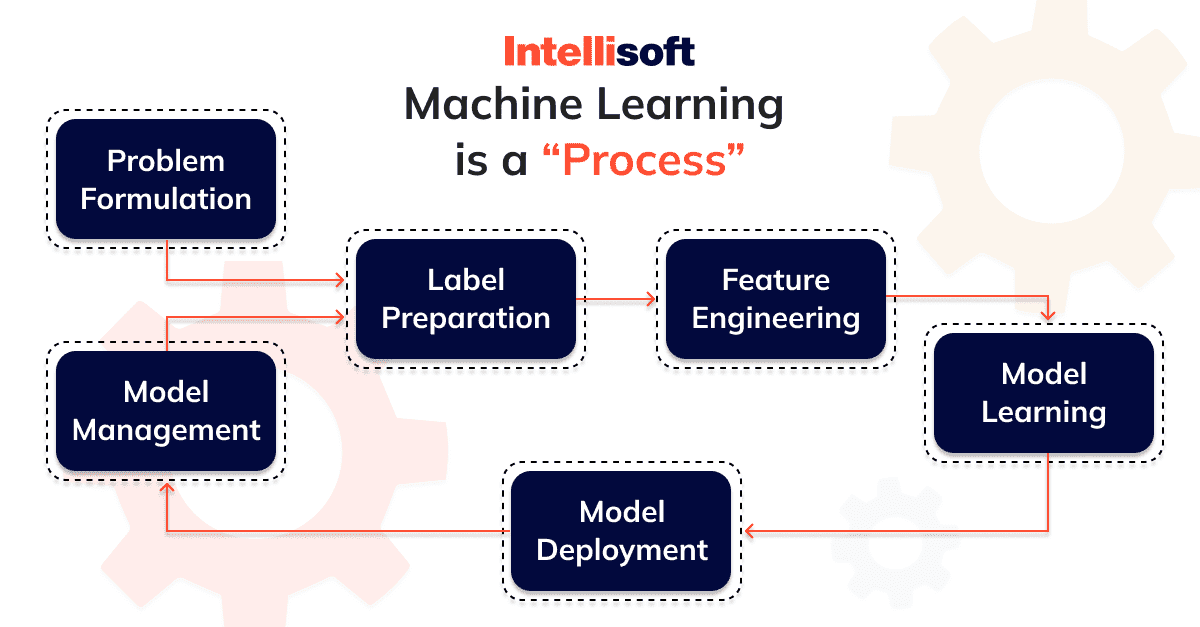
In a nutshell, AI and machine learning are like the Batman and Robin of the tech world, transforming our lives in ways we could only imagine a few decades ago. And that is only the tip of the iceberg.
Criteria for Choosing a Programming Language
When you need to select a programming language for artificial intelligence and machine learning, the process is far from arbitrary. Certain characteristics should be weighed before making the final decision. Let’s take a close look at the attributes that serve as an evaluation yardstick.
Efficiency
The efficiency of a programming language is paramount in AI and ML development. This trait encapsulates two facets; the speed at which a language can perform tasks, and how effectively it uses resources. Efficiency is measured by the language’s ability to execute commands swiftly and handle CPU and memory usage optimally. An efficient language promotes faster development and deployment of AI and ML applications, which is crucial in industries where rapid solution delivery can make a significant difference.
Library Support
The strength and breadth of a programming language’s library support play an essential role in the language selection process. Libraries are collections of pre-written code that developers can use to save time and avoid reinventing the wheel. They are particularly critical in AI and ML, where specific libraries can significantly accelerate the development process by providing ready-to-use algorithms and data structures. A language with a comprehensive range of robust libraries is often preferred for AI and ML development.
Community Support
Community support is another vital consideration when choosing a programming language for AI and ML. A large and active community can provide assistance when developers encounter issues, share resources and tutorials, and continually contribute to the improvement and extension of the language. The strength of community support can be a good indicator of a language’s vitality and longevity.
Flexibility
The last major criterion is the flexibility of the programming language. A flexible language is versatile and adaptable, capable of meeting various requirements and functioning in different environments. It allows developers to mold the language to their needs rather than adjusting their needs to the language. In the dynamic field of AI and ML, where requirements often evolve and change, flexibility can be a decisive factor in choosing a programming language.
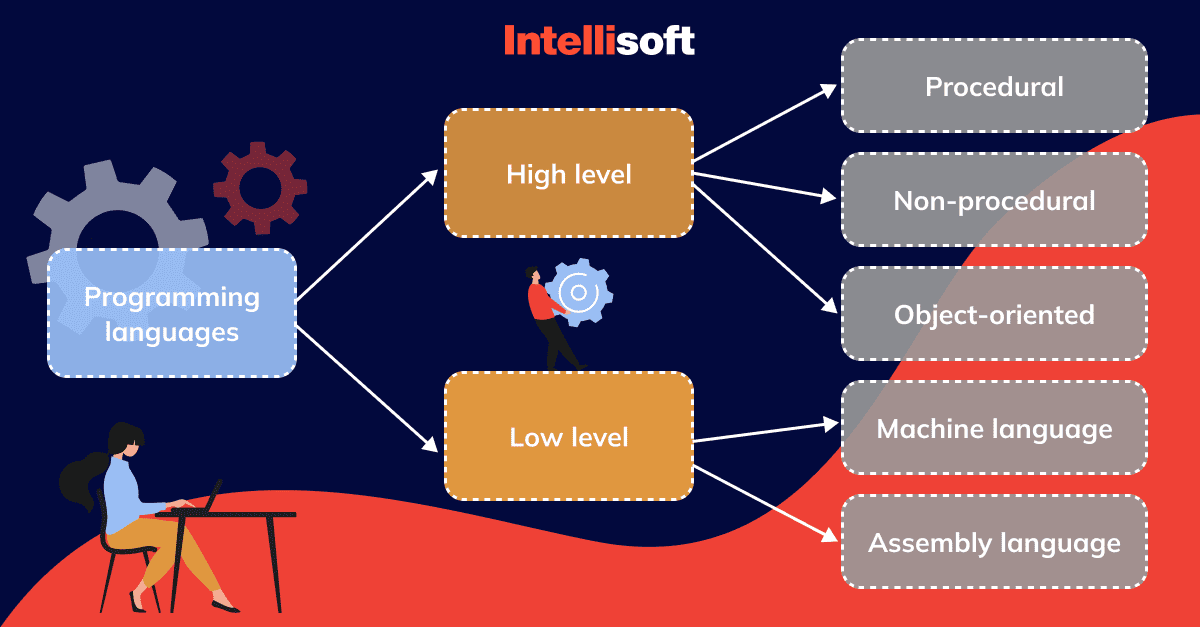
Having a clear understanding of what makes a programming language well-suited for AI and ML, we now turn our attention to the actual contenders. We’ll dive into the unique features, strengths, and weaknesses of some of the most popular programming languages in the AI and ML landscape. Each has its own merits and weaknesses, libraries, and community support.
Related readings:
- Top 10 Data Warehouse Software Tools for Your Business
- Cloud Computing Scalability: What Is It and Why It’s Important?
- Best Tech Stack for Optical Character Recognition Automation
- What Are the Security Risks of Cloud Computing? Threats & Solutions
- Artificial Intelligence (AI) in the Law Industry: Key Trends, Examples, & Usages
Python
Python is the quintessential darling of the programming world, especially when it comes to AI and machine learning. Python has become one of the most used languages in this domain, and there are many reasons for that. Let’s talk about what makes Python a preferred choice and explore some of its strengths and weaknesses.
Why Choose Python for AI and Machine Learning
One of the primary reasons behind Python’s popularity in AI and ML is its simplicity and readability. The language is intended to be easy to understand and write. This enables developers, even beginners, to focus on the problem-solving aspects of AI and ML rather than getting bogged down by the complexity of the language syntax.
Python also provides a robust standard library that covers a lot of ground, reducing the need to code everything from scratch. However, what truly sets Python apart is its rich ecosystem of specialized libraries for AI and ML. Libraries such as NumPy, pandas, and Matplotlib take care of the numerical aspects and data visualization, while SciPy brings in additional scientific computing capabilities.
When it comes to machine learning, libraries such as Scikit-learn offer a variety of algorithms and utilities for regression, classification, clustering, and more. Then there are TensorFlow and PyTorch, top-notch libraries for creating and training advanced machine learning models, including deep learning models.
Python’s interoperability is another strong suit. It can easily communicate with other languages like C and C++, enabling it to leverage optimized code pieces for computationally intensive tasks, thus enhancing its performance. Moreover, Python’s extensive community support ensures that developers can quickly find solutions and get help when needed.
However, like every language, Python is not without its weaknesses. Despite its overall simplicity, Python’s performance can be slower compared to languages like C or Java, especially when handling complex mathematical computations. This can be mitigated to a certain extent with libraries such as NumPy that use underlying C implementation for heavy computations.
Another area where Python might fall short is mobile computing. Python is not typically used for mobile app development, limiting its usage to on-device ML applications.
Popular Python Libraries for AI and ML
As we already said, Python’s strength in AI and ML lies in its vast selection of dedicated libraries. Let’s dig deeper into some of these.
NumPy
Short for ‘Numerical Python,’ NumPy is the backbone of numerical computations in Python. It offers a powerful N-dimensional array object, tools for integrating C/C++ code, useful linear algebra, Fourier transform, and random number capabilities.
SciPy
Built on top of NumPy, SciPy is a library for scientific and technical computing. It provides modules for optimization, integration, interpolation, signal and image processing, statistics, and more.
Pandas
This library is the go-to tool for data manipulation and analysis. It provides users with the ability to manipulate numerical tables and time series through its comprehensive data structures and operations.
Matplotlib
Data visualization is a crucial part of AI and ML, and Matplotlib is Python’s primary plotting library. It provides a flexible way to create static, animated, and interactive plots in a variety of formats.
Scikit-learn
A comprehensive library for machine learning, Scikit-learn provides a collection of supervised and unsupervised learning algorithms. It also offers tools for model fitting, data preprocessing, model selection and evaluation, and more.
TensorFlow
Developed by Google, TensorFlow is a leading library for creating and training machine learning models, including deep learning models. It allows developers to build neural networks from scratch and provides tools for conducting complex mathematical computations.
PyTorch
Developed by Facebook’s AI Research lab, PyTorch is another popular library for machine learning that is especially well-suited for applications like natural language processing. It is known for its simplicity and ease of use, especially when it comes to building deep learning models.
So, is Python good for AI? To sum it up, Python is a powerhouse in the world of AI and ML, equipped with a plethora of libraries and a vibrant community. While it has its limitations, the overall balance of features, flexibility, and level of support makes it a top contender in this space.
R
Now let’s step into the world of R, another favored language among data enthusiasts, statisticians, and AI/ML practitioners. R has a distinctive place in the world of programming languages due to its specialized focus on statistical computing. So, why should one choose R for AI and machine learning, and what are its strengths and weaknesses?
Why Choose R for AI and Machine Learning
R’s statistical prowess is unrivaled. Its comprehensive suite of statistical and graphical techniques includes all varieties of regression, classical statistical tests, time-series analysis, classification, clustering, and much more. This makes it a favorite among statisticians and data scientists for conducting exploratory data analysis, statistical tests, and model fitting.
R also shines in the domain of data visualization with packages like ggplot2, offering a range of aesthetically pleasing graphs and plots. This ability to intuitively represent data is an integral part of data analysis, making R an effective tool for understanding complex data.
Moreover, R’s data handling capabilities are quite impressive. It can handle larger datasets than many other programming languages, including Python, which is a definite advantage when working with big data.
R also boasts a vibrant, active community. This means a rich ecosystem of user-created packages that extend the language’s capabilities, plus an abundance of resources for learning and troubleshooting.
However, R isn’t without its shortcomings. The most common criticism is its relatively difficult learning process, particularly for those not familiar with programming. Its syntax is unique and can be confusing for beginners.
Another downside is that R can be slower than other languages, such as Python or C++, when it comes to executing complex algorithms, which might be a concern for time-sensitive applications. Additionally, R might not be the best choice for general-purpose programming or application development outside the data analysis and statistics domain.
Popular R Libraries for AI and ML
Like Python, R has an extensive range of libraries that facilitate and enhance AI and ML development. Let’s explore some of them.
Short for Classification And REgression Training, caret is a powerhouse package that provides a uniform interface to hundreds of ML algorithms. It also provides convenient functions for data splitting, preprocessing, feature selection, model tuning, and more.
This package includes functions for statistics and probability theory, such as the probability density function, Box and Whisker Plots, and more. However, it’s particularly known for its support for the SVM (Support Vector Machines) algorithm.
As the name suggests, this package implements the popular Random Forest algorithm for classification and regression.
Short for Recursive Partitioning and Regression Trees, rpart provides a framework for building classification or regression models of a very general structure.
This package offers a clean, unified interface to a range of ML methods, including classification, regression, clustering, and survival analysis, among others.
R’s powerful statistical and graphical capabilities make it a highly desirable choice for data scientists and statisticians venturing into AI and ML. While its learning curve and speed may be a concern for some, its specialized focus and community support provide compelling reasons to consider it for AI and ML applications.
Java
The Java language is known for its robustness and versatility. Despite the rise of many modern languages, Java has remained a steadfast player in the programming world, and it’s made substantial inroads into AI and machine learning as well. So, what makes Java a good choice for AI and machine learning, and what are its notable strengths and weaknesses?
Why Choose Java for AI and Machine Learning
Java offers a host of features that make it a suitable language for AI and ML. Its strong typing system helps prevent errors, leading to robust code, while its object-oriented programming (OOP) model promotes modularity and reusability, both critical for large-scale AI/ML projects.
The performance of Java is another strength, with just-in-time compilation offering speed close to lower-level languages like C++. Its extensive standard library provides functionality for a broad range of tasks without requiring external packages.
Java’s platform independence, captured in the phrase “Write Once, Run Anywhere,” makes it highly portable. This feature can be beneficial in AI/ML projects that need to be deployed across different operating systems.
Moreover, Java’s extensive tooling ecosystem, including integrated development environments (IDEs) like Eclipse and IntelliJ IDEA, testing frameworks, and profiling tools, can increase productivity and make the development process smoother.
On the flip side, Java can be more verbose and complex than some other languages like Python, which can slow down development and make the code harder to understand. Furthermore, while Java does have libraries for AI/ML, it might not offer the same level of ease of use or variety as Python or R.
Popular Java Libraries for AI and ML
Despite all its limitations, Java does have a set of powerful libraries for AI and ML. Here are some of the most popular ones:
An established library for machine learning, Weka offers a collection of algorithms for data analysis and predictive modeling. It’s well-suited for developing new ML schemes.
This open-source, distributed deep learning library in Java, also called DL4J, is designed to be used in business applications on distributed CPUs and GPUs.
Short for MAchine Learning for LanguagE Toolkit, Mallet is a software package written in Java that is used for statistical natural language processing, as well as tasks such as clustering, document classification, topic modeling, and other ML applications to text.
Designed for data mining with a focus on clustering and outlier detection, ELKI offers a large number of highly parameterizable algorithms, and an architecture that allows for easy and quick extension.
While Java might not be the first language that comes to mind for AI and ML, its robustness, performance, and tooling make it a viable choice, especially for large-scale, complex projects. Its libraries, though not as plentiful as Python’s or R’s, are robust and provide a good foundation for AI and ML applications.
Julia
We’re continuing our journey through the languages of AI and machine learning with Julia, a language that, while not as ubiquitous as Python or Java, has been making waves in the computational and data science worlds with its impressive performance and ease of use.
Why Choose Julia for AI and Machine Learning
If you want a language that combines the performance of C with the dynamism of Python, you might want to give Julia a look. It was specifically designed to be high-level and easy to use while not sacrificing performance, a common trade-off in many languages. Its syntax is similar to Python’s, so it’s relatively easy for Python programmers to pick up.
Julia’s ability to execute numerical and scientific computing tasks quickly and efficiently makes it a potent tool for AI and machine learning. Its just-in-time (JIT) compilation allows it to approach and even match the speeds of C and Fortran for many tasks.
Another strength of Julia is its ability to call C and Python libraries directly, meaning you don’t have to give up your favorite Python or C tools to work in Julia. It also has strong support for parallel and distributed computing, making it an excellent choice for large-scale machine-learning tasks.
The main downside of Julia at present is its relative newness. It doesn’t have as large a community as languages like Python or Java, which means fewer resources for learning the language or troubleshooting. The number of libraries, while growing, is still smaller than in more established languages.
Popular Julia Libraries for AI and ML
Despite its youth, Julia has a growing set of powerful libraries for AI and machine learning. Here are a few you should know:
This is a high-level library for machine learning. It has a simple and intuitive syntax and is highly flexible, allowing you to define your own complex models without any trouble.
Machine learning in Julia (MLJ) is a toolbox written in Julia that offers a user-friendly interface and meta-algorithms for selecting, tuning, evaluating, composing, and comparing over 150 machine learning models written in Julia and other languages.
This library brings the popular Python library Scikit-Learn’s interface to Julia. It includes tools for machine learning model selection, assessment, and hyperparameter tuning.
Known as the ‘Koç University deep learning framework,’ Knet supports GPU operation and automatic differentiation using dynamic computational graphs for models defined in plain Julia.
Julia represents a cutting-edge option for AI and machine learning. It’s a language that has been explicitly designed with high performance and ease of use in mind, making it a compelling choice for those fascinated by the cutting edge of AI and machine learning development. While its community is smaller than some of the other languages discussed, its unique combination of features means it’s worth considering for your AI/ML projects.
Scala
Scala is next on our list of programming languages for AI and machine learning. With its name derived from “Scalable Language,” Scala was designed to grow with the needs of its users. But what does this scalability mean for those looking to delve into AI and ML? Let’s find out.
Why Choose Scala for AI and Machine Learning
One of the major reasons to choose Scala for AI and ML is its seamless integration with the Apache Spark framework. Spark, a fast, general-purpose cluster-computing system, has a multitude of ML and AI libraries and is primarily used for big data processing and analytics. As Scala is Spark’s language of choice, many AI developers find it natural to use Scala for their ML needs.
The language itself is statically typed, which can prevent many programming errors at compile-time. It provides the full support of functional programming and a strong static type system, which can make your code more readable, scalable, and maintainable.
Scala also interoperates seamlessly with Java, meaning you can call Java libraries directly from Scala and vice-versa. This opens up a vast array of capabilities, as Java has a robust ecosystem of libraries and frameworks that can be beneficial in an AI/ML context.
However, Scala does come with some challenges. Its learning curve is a little steep, especially for those not familiar with functional programming paradigms. Also, while its community is active, it’s not as large or as resource-rich as Python’s or Java’s.
Popular Scala Libraries for AI and ML
Scala might not have as many ML libraries as Python, but the ones it does have are incredibly powerful, especially when coupled with Spark. Here are some popular Scala libraries for AI and ML:
Breeze is a library for numerical processing. It’s not a machine learning library per se, but it can be used as a foundation for ML tasks.
As part of the Spark framework, MLib is a scalable machine learning library that includes many common ML algorithms.
Saddle is a data manipulation library that can be considered analogous to Python’s pandas. It’s not specific to ML, but it can be instrumental in preprocessing data.
While this is a Java library, it can be used seamlessly in Scala for implementing deep learning algorithms. It’s designed to be used in business environments rather than as a research tool.
Scala is an excellent choice for large-scale data analysis and processing tasks, and it particularly shines when used with Apache Spark. Despite a steeper learning curve, its powerful capabilities and robustness make it a strong candidate for AI and ML tasks, especially in a big data context.
Lisp
Now let’s travel back in time to explore Lisp, one of the oldest programming languages still in use today. Having been intimately connected with artificial intelligence research since its inception, Lisp has a rich history in the realm of AI. But is this seasoned veteran still relevant in today’s AI and ML landscape?
Why Choose Lisp for AI and Machine Learning
Known for its unique features, Lisp was the go-to language for AI in the early days. It has a dynamic typing system, excellent meta-programming capabilities, and can handle symbolic computation excellently. Its syntax, which uses lots of parentheses, is simple and consistent, leading to straightforward and clear code.
Lisp is the second-oldest high-level programming language and is only surpassed in age by Fortran. Yet, despite its age, it’s highly extensible, with the ability to effectively define your own syntax and create domain-specific languages.
While it does not offer the same kind of library support as Python, Lisp has always been popular in academia and artificial intelligence research. It was, after all, created as a practical mathematical notation for computer programs. This mathematical foundation is particularly handy when implementing complex machine-learning algorithms.
Even though Lisp might not be the first choice for many when it comes to modern AI and ML applications, it still has its niche. Lisp shines in areas like genetic programming and rapid prototyping and is preferred for tasks involving symbolic processing and manipulation.
However, Lisp has its drawbacks. Its popularity and usage have significantly diminished over the years, resulting in smaller community support. The availability of resources, tools, libraries, and tutorials is rather limited when compared to languages like Python or Java. Furthermore, the heavy use of parentheses in Lisp can be off-putting to those accustomed to C-like syntax.
The modern Lisp community is small, and finding updated libraries for AI can be a challenge. This lack of up-to-date libraries, combined with a steep learning curve for newcomers, means Lisp isn’t as popular or widely used as some of the other languages on this list.
While Lisp might not be the first language that comes to mind for modern AI and ML applications, it has left an indelible mark on the history of AI programming. It might not be the go-to choice for most developers today, but its legacy continues to influence many modern programming languages, and it remains an interesting option for certain AI-focused projects.
C++
Steering away from high-level, interpreted languages, let’s talk about the time-honored, compiled language: C++. Known for its speed and control over system resources, C++ has carved out its niche in the world of AI and Machine Learning. But let’s unravel its specific strengths, weaknesses, and noteworthy libraries in this context.
Why Choose C++ for AI and Machine Learning
Speed and efficiency are the key attributes of C++. It provides a level of control over system resources that few other languages can match. With C++, developers have direct control over memory management, allowing for fine-tuning that can lead to significantly improved performance. This makes it an excellent choice for resource-intensive AI and ML tasks, including real-time applications.
Moreover, C++ excels in situations where multithreading and concurrency are required, and its ability to run close to the system hardware makes it suitable for implementing game AI, robotics, real-time systems, and more.
That being said, C++ isn’t all sunshine and rainbows. It has a steeper learning curve than other languages like Python and R, which can deter beginners. While powerful, its syntax is more complex and less readable, requiring a solid understanding of programming concepts. Furthermore, C++ lacks the extensive library support for AI and ML seen in Python, which can make implementation more time-consuming.
Popular C++ libraries do exist for AI and ML, though. For instance, MLpack is a machine learning library in C++ that emphasizes speed and flexibility. Similarly, Shark provides algorithms for large-scale optimization. Libraries like Dlib, known for their real-time processing capabilities, and Tensorflow, which has C++ API in addition to its primary Python interface, are also available for use.
Is C++ good for AI? While C++ may not be the first choice for beginners in the realm of AI and ML due to its complexity, it provides unmatched speed and efficiency that can be critical for certain resource-intensive applications. With a well-thought-out approach, and by taking advantage of the relevant libraries, using C++ for AI and ML can be a powerful choice for the right projects.
JavaScript
Surprised to see JavaScript in this lineup? Don’t be! While traditionally confined to web development, JavaScript is increasingly being adopted for AI and machine learning. Let’s explore the reasons for this trend, analyze its strengths and weaknesses, and familiarize ourselves with its popular libraries.
Why Choose JavaScript for AI and Machine Learning
One of the most significant strengths of JavaScript is its ubiquity. As the principal language for web development, JavaScript runs in all modern browsers, making it accessible to a wide array of developers and allowing for effortless deployment of AI and ML models on the web.
Furthermore, JavaScript’s event-driven, non-blocking I/O model makes it well-suited to real-time applications such as chatbots, personal assistants, or any application that requires real-time user interaction.
However, JavaScript is not without its challenges when it comes to AI and ML. It is not as efficient or fast as languages like C++ or Python, and it was not designed with mathematical computations in mind, which are core to AI and ML algorithms. Also, while it is improving, JavaScript’s library ecosystem for AI and ML is not as mature as that of Python.
Nevertheless, various notable JavaScript libraries are available for AI and ML. TensorFlow.js, a JavaScript library for training and deploying machine learning models in the browser and on Node.js, stands out prominently. Synaptic is another comprehensive library for building neural networks. For natural language processing, there’s compromise, and for machine learning, there’s machinelearn.js, amongst others.
While JavaScript may not be the first language that comes to mind when considering AI and ML, its wide use, accessibility, and real-time capabilities make it a viable option for certain use cases, especially those centered around the web and real-time applications. While it has its challenges, it is a rapidly evolving field with an increasing number of resources and libraries being developed.
Haskell
Haskell, an open-source, purely functional programming language, might seem like an unconventional choice for AI and Machine Learning. However, it offers a unique perspective and brings certain advantages to the table. Let’s dive into the reasons why you might consider Haskell for AI and machine learning, its strengths and weaknesses, and some popular libraries.
Why Choose Haskell for AI and Machine Learning
Haskell’s strong static typing system and advanced type inference allow for code correctness, ensuring mathematical accuracy in AI and machine learning computations. Moreover, its purity and immutability concepts facilitate clearer reasoning about the code, making it easier to debug and maintain.
One unique advantage of Haskell is its lazy evaluation strategy, which only evaluates expressions when they are needed. This can lead to more efficient code execution and memory usage, particularly in big data scenarios or when dealing with complex computations.
However, Haskell has its challenges. Its learning curve is steep compared to other languages on this list, primarily due to its purely functional paradigm, which may be unfamiliar to many developers. In addition, while Haskell’s community is passionate, it is smaller and thus offers less support than communities for languages like Python or Java. Furthermore, Haskell’s ecosystem for AI and machine learning, though growing, is not as extensive or mature as those of more commonly used languages.
Despite these challenges, Haskell boasts several useful libraries for AI and machine learning. HLearn is a notable one, a library for homomorphic learning, allowing for algebraic computations on data models. Another library, grenade, offers a composable, dependently typed, practical, and fast recurrent neural network library. Other libraries include hmatrix for numeric computations and easytensor for tensor operations.
While Haskell may not be the first choice for many due to its steep learning curve and smaller community, its unique features like static typing, lazy evaluation, and functional programming make it a worthy contender, particularly for complex AI and machine learning computations. It certainly deserves consideration, especially for those who value rigorous mathematical accuracy and functional programming.
Prolog
Diving into the deeper waters of AI and machine learning, we stumble upon an old but gold language: Prolog. Known for its prowess in symbolic reasoning and rule-based systems, Prolog has been a mainstay in AI for decades. Let’s take a closer look at why you might want to consider Prolog for AI and machine learning, its strengths and weaknesses, and how it excels in symbolic reasoning and rule-based systems.
Why Choose Prolog for AI and Machine Learning
Prolog stands out in the AI domain due to its logic-based paradigm. It’s designed to express logic with a few simple yet powerful constructs, making it uniquely suited for solving problems that require complex symbolic reasoning.
The rule-based system is another compelling reason to use Prolog. Rules and facts define the logic of the program in Prolog, which facilitates building expert systems and other AI applications. The language is well-equipped for handling tasks such as automated theorem proving, expert systems, and non-numerical programming problems.
Prolog’s strength lies in its inherent capacity to perform pattern matching and automatic backtracking, which simplifies the development of AI algorithms. However, it’s not all smooth sailing. Prolog has a steep learning curve due to its different programming paradigm and a smaller community compared to other mainstream languages.
Moreover, Prolog may not be the best choice for data-intensive machine learning tasks that rely heavily on numeric computations. It excels in symbolic processing but falls short when it comes to numerical computation.
Despite these drawbacks, Prolog has been used extensively for AI and machine learning, specifically in areas where rule-based systems shine. It offers an exceptional approach to complex problem-solving in areas such as natural language processing, knowledge representation, and planning.
Prolog might not be your go-to language for conventional machine learning tasks, but it holds its ground as a compelling option for symbolic reasoning and rule-based systems in AI. Its unique logic-based paradigm and powerful rule-based system make it worthy of consideration, especially when dealing with complex symbolic reasoning tasks in AI.
What Programming Languages are not Well-Suited for AI Development?
Not every programming language that is well-suited for general-purpose programming is equally apt for the particular demands of AI and machine learning. It’s crucial to know which ones may not be the best fit to save time, resources, and energy in your AI development journey. Let’s talk about some languages that are popular in their own right but are usually not the top choices for AI.
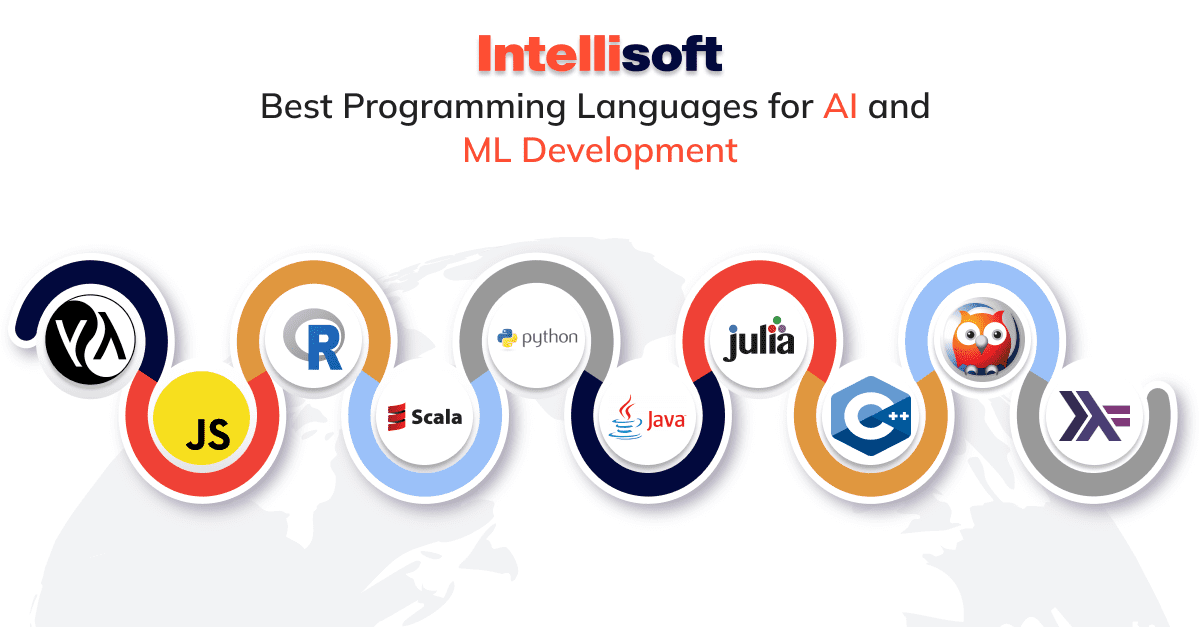
PHP, an all-time favorite for web development, is not typically used in AI and machine learning. While it has frameworks and libraries like PHP-ML, it generally lacks the robust ecosystem for scientific computation and data analysis that languages such as Python, R, or Julia offer. Moreover, PHP’s performance in mathematical computations and handling large data sets is somewhat limited compared to other languages.
C, a powerful language used for system-level programming, is not commonly used in AI development either. While it’s blazingly fast and efficient, the lack of high-level abstractions, limited library support for machine learning, and steep learning curve make it less attractive for AI tasks.
Ruby, while being an elegant and easy-to-use language, lacks a robust machine learning and data analysis ecosystem. Although there are libraries such as rumale, they aren’t as comprehensive or popular as those in Python, Java, or R. Thus, Ruby doesn’t quite hit the mark for AI and machine learning.
Fortran, despite its historical significance in numerical computation, is not commonly used in modern AI and machine learning. While it’s still used in some legacy systems and scientific computing, it doesn’t have extensive library support or a vibrant community focused on AI and machine learning, making it less suitable for these tasks.
Lastly, Perl, often used for text processing, isn’t typically a go-to for AI. It has some AI-related modules, but they are not as comprehensive or widely used as those available in languages such as Python, Java, or R. Furthermore, Perl’s syntax can be challenging to grasp for beginners, making it less approachable for AI and machine learning tasks.
Even though these languages have their strengths and are excellent in their domains, they may not be the ideal choice for AI development due to reasons such as a lack of comprehensive AI-focused libraries, a less vibrant AI community, or being less suitable for tasks involving heavy mathematical computations and large data sets.
Comparative Analysis
When comparing and contrasting programming languages for AI and machine learning, we feel like kids in a candy store. The choices are mouth-watering, each one promising unique flavors and experiences. Let’s take a bird’s-eye view of our ten languages and see how they stack up against each other.
Comparing the Top 10 Languages
| Language | Efficiency | Library Support | Community Support | Flexibility | Good For |
|---|---|---|---|---|---|
| Python | High | High | High | High | Rapid prototyping, data analysis |
| R | Moderate | High | High | High | Statistical analysis, data visualization |
| Java | High | High | High | High | Large-scale systems, web applications |
| Julia | High | Moderate | Moderate | High | High-performance scientific computing |
| Scala | High | Moderate | Moderate | High | Big data processing, concurrent computing |
| Lisp | Moderate | Low | Low | High | Symbolic computation, AI research |
| C++ | High | High | High | High | High-performance computing, game development |
| JavaScript | Moderate | High | High | High | Web applications, interactive websites |
| Haskell | Moderate | Moderate | Low | High | Academic research, functional programming |
| Prolog | Low | Low | Low | Moderate | Logic programming, AI rules systems |
It’s important to remember that this table is a general guide. The best language will still depend on your specific project requirements, your team’s proficiency, and the project’s scale.
Choosing the Right Language
Now that we’ve compared our sweet language treats, it’s time for the million-dollar question: Which one to choose? Well, let’s put it this way. If programming languages were shoes, you wouldn’t wear flip-flops to a black-tie event or put on hiking boots for a beach day, right?
Choosing the right language usually comes down to the specific use case, your team’s expertise, and the scale of the project. You might want to use Python or R for data analysis and exploration, Java or C++ for larger-scale applications, or Julia and Scala for high-performance computing tasks.
Prolog might be your choice for specific logic programming needs, while Lisp offers unique benefits in symbolic computation. It’s not a one-size-fits-all scenario. Each language has its strengths and weaknesses, and what’s important is finding the right tool for the right job.
Remember, choosing a language isn’t about picking the ‘best’ one – it’s about picking the right one for you and your project. Whether you’re dancing at a black-tie event or chilling on a sandy beach, make sure you have the right shoes… or, in our case, the right language.
Conclusion
In this technology-driven odyssey, we’ve journeyed through the sprawling landscape of AI and machine learning, venturing into the unique features, strengths, and weaknesses of the top ten programming languages. We’ve unveiled the core qualities that distinguish Python’s simplicity, R’s statistical prowess, Java’s versatility, Julia’s performance, Scala’s concurrency, Lisp’s symbolic prowess, C++’s efficiency, JavaScript’s interactivity, Haskell’s academic suitability, and Prolog’s logical thinking.
We’ve brought to light the vital role of efficiency, library and community support, and flexibility in choosing the right tool for your AI and machine learning endeavors. However, while understanding these programming languages is vital, choosing the right one for your specific case often comes down to project needs, team expertise, and project scale. The maxim “choose the right tool for the right job” holds an important truth here.
Now, you’re well-equipped with the knowledge to navigate the often-daunting sea of AI and machine learning programming languages. But why venture alone? At IntelliSoft, we’ve been on this journey countless times, guiding businesses through the maze of AI and machine learning development.
We’ve built a reputation on our ability to tailor solutions to our clients’ needs, utilizing our in-depth understanding of these languages and more. From building high-performance systems with C++, to developing intuitive web applications using JavaScript, or implementing machine learning models with Python, our expertise spans the full spectrum of AI and machine learning.
Want to calculate your costs before starting your AI and machine learning journey? No problem! Set sail with IntelliSoft as your trusted guide. We’re ready when you are.
